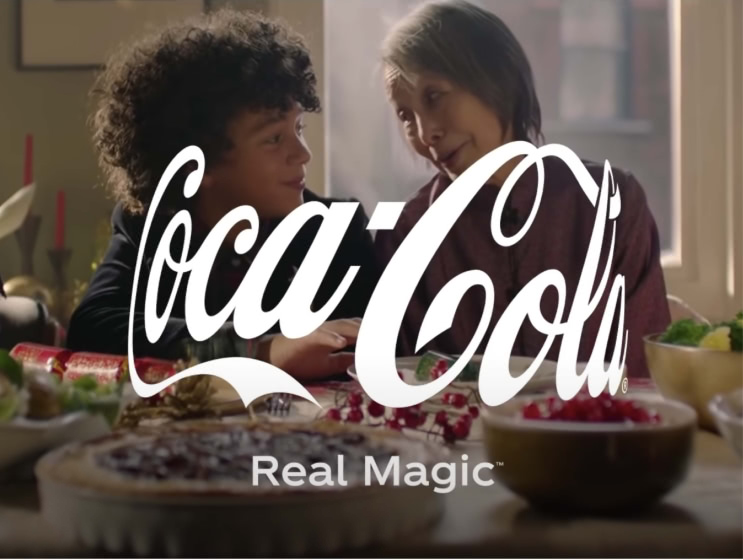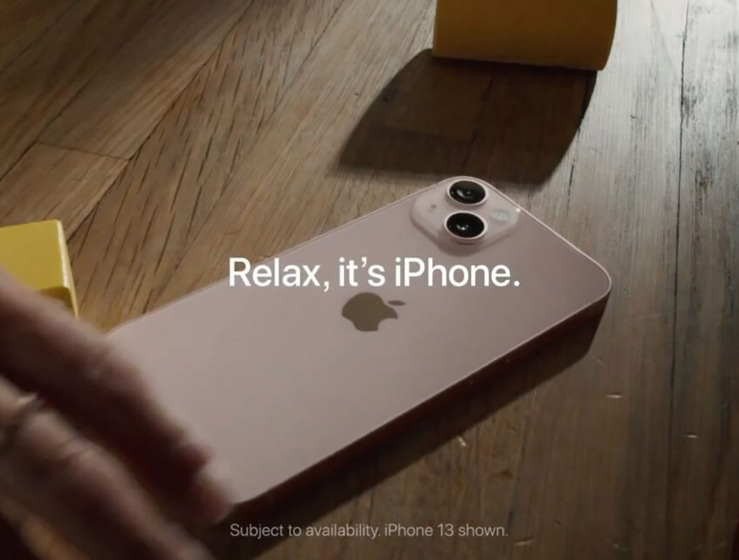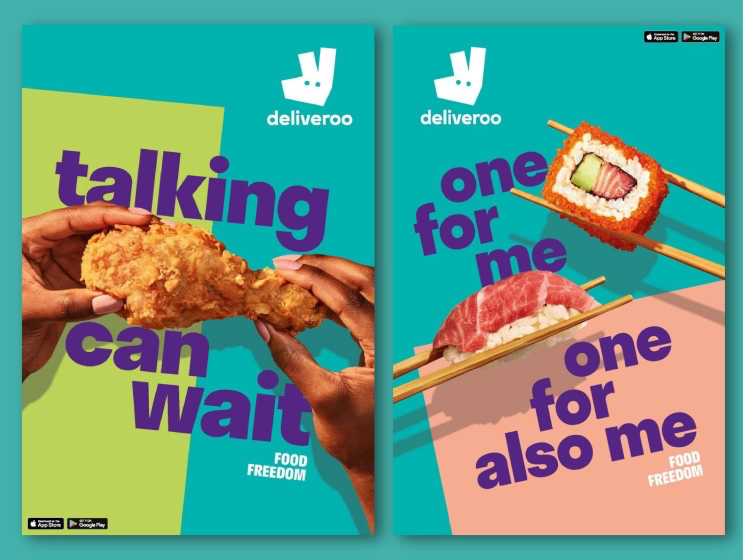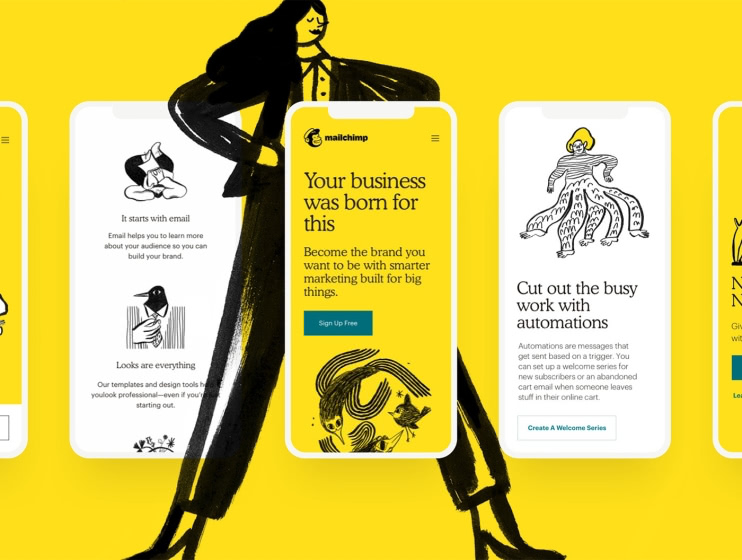What is brand design and why is it important?
Brand design is the process of actively creating a brand’s visual identity, and should convey who, what, and why a brand is.
It takes creativity, strategy, and skill to establish a unique brand identity that is instantly recognisable in crowded markets, sparks an emotional connection with its audience, leaves a lasting impression and boosts brand recognition. To create a visual identity that rises above the rest, you need deliberate, planned, and inventive branding – which is where brand design comes in.
Branding is what makes brands unique, recognisable and reputational, and it requires a unified system of design elements, such as logo design, colours, typography, illustrations, photography, and so on, to get there.
Branding is everywhere. At the heart of every successful brand is design that communicates its identity, purpose and values. In this article, we’re going to outline exactly why strong design is pivotal to your brand’s success, what you need to get there, and how to pull it all together – so that when it comes to it, you can hit the ground running.
What is brand design?
Brand design is the act of designing your brand to embody your brand’s personality and brand values. More than logos and colours and visual branding elements, branding refers to a much wider picture, one that encompasses everything about your business, from how it sounds, looks, and talks, to the values that underpin its actions.
Branding has always been an important part of business – allowing customers to make quick assumptions about what they think you do, and if they should invest in you. In a busy world, full of new brands and competing strategies, your brand will often determine whether customers buy into your business in the long term. Strong branding can be the difference between a one-off purchase, and an ongoing relationship, providing you with the chance to manifest and prove what you will mean to your customers.
Your design should be insight-driven – informed by research and a deep understanding of the needs of your target audience. A well-designed brand should represent the right thing (your brand purpose, price point, etc.) to the right people (your ideal customers or clients) – enabling them not only to identify your brand’s services, content and products but also to identify with your brand.
The design process
Before getting started, you’ll need to set about creating the various design elements that make up your brand’s visual and verbal identity. Design is more than visual aesthetics – it’s about communicating how and why your brand works, in a way that is tailored to your target audience.
Your design should promise your customers a seamless user experience, influencing a perception of your brand that keeps them coming back for more. After all, your brand image is made up of how your brand is perceived over time – which is why being consistent in presentation and tone is crucial.
It’s vital that your various verbal and visual elements – from your graphic design and colour schemes, to your typeface and tone of voice – work together as a unified system which upholds, and perpetually reinforces, your brand identity. All of this relies on good design.
1. Research and analysis
Your design needs to be insight driven, and the perspectives gleaned from customer and market research, and internal research should drive your design. We’d recommend kicking things off with a brand audit to glean an in-depth perspective on your brand positioning.
It’s key to remember the importance of internal brand perceptions, so take the time to conduct stakeholder interviews and surveys to get a grasp on how your employees and brand builders perceive your brand. Only by receiving a 360-degree perspective and understanding your brand’s unique needs, your customers’ challenges, and the outlook of your employees, can you begin to lay the groundwork for your design strategy.
Conduct thorough brand analysis and SEO customer, competitor, and market research to identify your brand identity’s strengths and opportunities. From here, you can begin to pull together your unique brand strategy.
2. Defining your brand strategy
Your brand strategy should include a well-defined brand framework outlining your brand’s key positioning elements, such as your brand proposition, brand architecture, brand personality, etc. This will act as both your blueprint and roadmap, bringing your visual and verbal identities to life, and steering you towards your future.
Begin by pinning down your unique brand proposition, and defining your branding strategy, vision, values, behaviours, and messaging. This will inform a clear and workable strategy – laying the foundations for the rest of your brand design project, whether you’re building a new brand identity or rebranding.
We’d recommend following this structure when forming your brand strategy:
- Consider your overall business strategy
- Identify your target audience.
- Research your target audience.
- Develop your brand positioning.
- Develop your messaging strategy.
- Develop your visual and verbal identity: name, logo and tagline.
- Develop your content marketing strategy.
- Develop your website & digital assets.
3. Creating your brand identity
With the insights gleaned from your research, and your brand direction in hand, you can now get started on creating the following design elements – which are also your brand fundamentals:
- Logos
- Typography
- Colour schemes
- Image style
- Animation
Each element should be designed as an integral component of your unified aesthetic – working independently and in tandem with the other elements, to create a cohesive and consistent identity.
Once your brand identity design is complete, take the time to solidify all your design choices in a brand style guide. Essential when it comes to preserving your brand identity, a style guide ensures that your brand remains consistent across all platforms and channels, at all times.
4. Execute your brand across touchpoints
Creating brand touchpoints is the final step of your design process – and is where you can creatively combine all your brand’s elements to strategically communicate your brand’s core messaging.
Brand touchpoints are where you have the chance to interact with and engage with your customers. They’re where your brand identity comes to life, providing your customers with an engaging and on-brand experience, in any of the following forms:
- Business cards
- Web-design
- Brand mascots
- Social media
- Iconography
- Signage
- Wordmark
- Tone of voice
- Their brand name
Each of these elements are brand touchpoints and should be designed in a way that is consistent with the rest of your brand, and each other.
Why brand identity design is important
A company’s brand design is what makes them unique and memorable and it is what will leave a lasting impression on existing and potential customers. Your brand’s visual identity is pivotal to its differentiation, engagement, and memorability – it allows your customers and clients to recognise your brand’s distinctive identity, shaping not just how they perceive your brand – but how they engage with it.
Strong design is at the foundation of all good branding, and good branding is the difference between becoming a burgeoning sensation or just another breeze-by-business. More than merely enhancing your brand’s corporate identity, branding can drive new business, increase brand value, and allows you to nurture lasting relationships with your target audience.
Design can make or break how people perceive your brand, so investing in high-quality design is a sure-fire way to stand out from the crowd and turn content consumers, into loyal customers. That’s just the beginning, effective design also ensures the following:
1. Instils authority and trust in your business
Customer’s trust is one of the most important things your brand can have, although, it’s not always easy to earn.
Branding is crucial when it comes to boosting customer’s confidence in your brand and getting them to trust your business. Today, customers expect branded content from everyone and everything, and companies that don’t brand themselves run the risk of being deemed as less professional, less credible, and less established.
Strong branding communicates to your customers that you care about your brand and are willing to invest in yourself. In turn, customers will recognise – and value – the work put in and will invest their time and trust. While your brand is reflected in your name and logo, and supported by your messaging and services, these things mean nothing without what people perceive them to be. It’s your identity that matters.
Good design is tailored to your customers to help them fulfil a need or solve a problem. Placing your customers at the heart of your branding is a sure-fire way to earn their trust, and prove your brand to be capable, necessary, and engaging.
2. Grabs attention
Branding tells your brand story in an instant, distinguishing your brand from the millions of others customers are bombarded with. The truth is, that brands with strong visual identities stand out above those that don’t invest in their branding. Brands that fail to nurture cohesive identities easily fade into the background, and are easily put aside, and forgotten.
Brand’s with strong visual identities are much more likely to make a grab attention, and make a real impact. Elements like distinctive logos, appealing colours and accessible fonts will make your brand stick out in a positive way. Grabbing this attention is a key driver of success – even if someone isn’t currently using your services, strong branding can make you impossible to forget, so that when the time comes, they’ll come back to you.
3. Create continuity
Brand continuity helps businesses reinforce their image, and is crucial to their success. The more often customers see the same message or image, the more likely they are to retain it. Maintaining brand consistency is how your brand remains memorable, allowing you to drive customer perception and engagement, from initial contact through purchasing.
Customers who understand your brand, and repeatedly receive engaging, smooth user experiences, are more likely to invest their trust, and keep coming back for more. Continuity instils customer confidence and ensures that your brand is ever-evolving, ever-learning and ever-growing.
4. Builds emotional connections and loyal customers
Brand identity design connects your values to a like-minded audience, allowing you to forge deep emotional connections. Through strong branding, you can convey your brand’s human side and appeal to your customers emotional needs, wants and desires – which in turn, will make them feel more connected to your brand. These emotional bonds and nurtured relationships will eventually ensure brand loyalty, which ultimately leads to brand longevity.
Brand guidelines
The design branding process doesn’t just allow for – it calls for – the creation of a brand guidelines document, which is probably one of the most important document you will have when it comes to your branding.
When it comes to overseeing consistent branding – guidelines are absolutely essential. They clearly outline brand asset guidelines for each and every brand element, from colour palettes, imagery, fonts, tone typography, and more. These living, breathing brand documents are crucial to building and maintaining your brand – and ensuring consistency across the board.
Importantly, brand guides ensure that everyone who contributes to your brand – from copywriters, illustrators, in-house designers, or freelancers – knows how to use your brand elements in the correct way across all channels and touchpoints.
Brand guidelines deserve their own article, and if you’re looking to read more check out our brand guidelines overview.
See how it’s done
Coca Cola
No matter your location, Coca Cola promise the same set of values – happiness, family and sharing – which are promoted consistently, universally and passionately. Built around these core themes, Coca Cola consistently communicates their promise, forging strong emotional connections with their customers.
Placing the importance on brand over product, Coca Cola sells a lifestyle, an emotion, and an experience – ensuring that their brand is universally understood across all cultures and languages. Their products are shown to bring people together, they’re something to be shared, and they’re something that brings happiness. Their red tins and glass bottles have become synonymous with this messaging, highlighting the success of their branding.

Apple
This brand powerhouse get it right. From their symbolic logo, sleek shop-faces, unique packaging and distinct products, to their advertisements, employees, digital experiences and beyond – Apple’s branding is consistently sleek, savvy and tech-smart. Their visual identity promises innovation and quality, which is matched in their communications and products. All aspects of Apple’s touchpoints create a singular perception of the brand in its customers minds. Ruthlessly consistent, Apple’s design is distinctive, continuously relevant, and trustworthy. They’ve earned a cult-like following that buys into their brand story and products. This is design at its most effective.

Deliveroo
Deliveroo have placed design at the heart of their brand. Their visual identity celebrates food, connectivity, and good design. They have carefully curated a minimal kangaroo graphic, sleek app, and polished uniform that challenges typical perceptions of takeaways. Each element is designed with this purpose in mind – and across all brand touchpoints – from their driver’s uniforms, their app, to their logo – their brand is consistently represented.

SLX
Hire and events industry leaders, SLX, use their branding to demonstrate their purpose, technological prowess, and future-facing ethos. From their social media, to their illustrations and digital interfaces – their brand identity loudly speaks for itself and is embedded into every element.

Mailchimp
Popular email marketing Platform Mailchimp redesigned their brand identity, bringing it into the modern arena to meet customers’ ever changing needs. Opting for subtle hand-drawn illustrations, Cavendish Yellow as a main brand colour, and Copper Light as its main typeface, their updated brand identity design represents their tools and practices in a much simpler, more accessible way. Opting for a less = more approach, their streamlined website helps users focus on the content – it’s minimal, yet effective.

It’s time to design your brand identity design
Great branding isn’t just about making sure that you look good – it’s about making sure you consistently walk the walk and talk the talk.
Whether you’re a start-up, a solo entrepreneur or a global enterprise, you cannot underestimate the importance of design. It’s useful to get a design agency on board to help you capture your brand through design – encompassing the logo, tagline, templates, design expression, and overall strategy.
We understand that branding takes time, and with a track record of creating strong brand identities, we’re here to help. Get in touch today to discuss how we can help develop your design, delivering a product that speaks to the core of your brand, resonates with your audience, helps you achieve your business goals and drives change. We are brand experts with sharp eyes for design, and we know how to help you stand out.